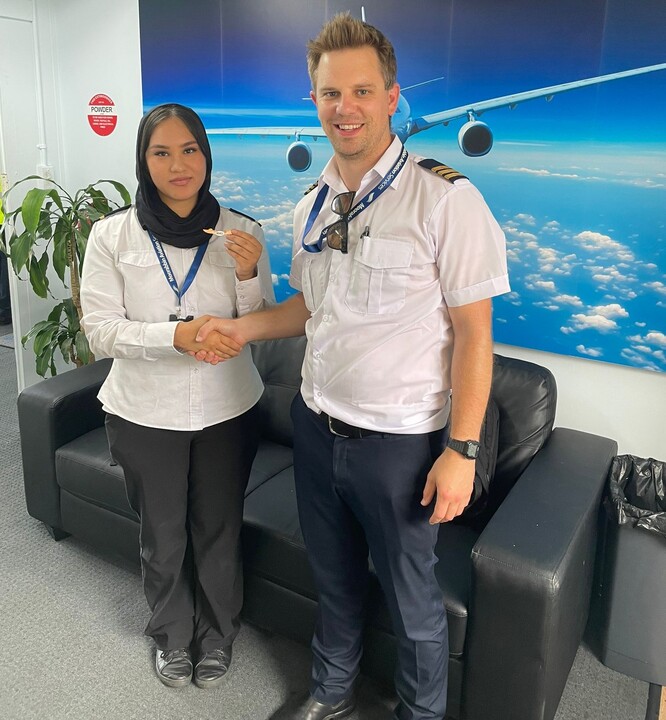Pilot Training 2024: Comparing Costs and Benefits in India, South Africa, and Indonesia
Body

Choosing the right location for pilot training is a crucial decision for aspiring aviators, and the year 2024 offers promising opportunities in India, South Africa, and Indonesia. Each of these countries provides distinct advantages and potential drawbacks in terms of costs and benefits. This guide will help you compare the Commercial Pilot Training Schools options in these regions, helping you make an informed decision based on your budget and career goals.
1. Pilot Training Costs
A. India
**1. Tuition Fees:
- Average Cost: Training programs in India typically range from $30,000 to $50,000 for a Commercial Pilot License (CPL). This includes ground school, flight hours, and associated training materials.
- Cost Variations: Costs can vary depending on the flight school, location, and type of aircraft used for training.
**2. Additional Expenses:
- Medical Examination: A Class 1 or 2 medical examination is required, costing approximately $200 to $500.
- Exams and Licensing Fees: DGCA examination and licensing fees may amount to around $1,000 to $2,000.
**3. Living Costs:
- Accommodation and Daily Expenses: Living expenses in India are relatively affordable compared to Western countries. Monthly costs for accommodation and food typically range from $300 to $800, depending on the city and lifestyle.
B. South Africa
**1. Tuition Fees:
- Average Cost: The cost of pilot training in South Africa generally ranges from $40,000 to $60,000 for a CPL. This includes both ground and flight training.
- Cost Variations: Fees may differ based on the flight school, type of aircraft, and additional services provided.
**2. Additional Expenses:
- Medical Examination: A Class 1 medical examination in South Africa costs approximately $250 to $600.
- Exams and Licensing Fees: SACAA examination and licensing fees are usually around $1,500 to $3,000.
**3. Living Costs:
- Accommodation and Daily Expenses: South Africa offers a moderate cost of living. Monthly expenses for accommodation and daily needs typically range from $500 to $1,000, depending on the city.
C. Indonesia
**1. Tuition Fees:
- Average Cost: In Indonesia, pilot training programs cost between $25,000 and $45,000 for a CPL. This is often more affordable compared to many other countries.
- Cost Variations: Prices can vary based on the flight school’s reputation and the specifics of the training program.
**2. Additional Expenses:
- Medical Examination: A Class 1 medical examination typically costs around $150 to $400.
- Exams and Licensing Fees: DGCA examination and licensing fees generally amount to $1,000 to $1,500.
**3. Living Costs:
- Accommodation and Daily Expenses: Indonesia is known for its low cost of living. Monthly expenses for accommodation and food are usually between $200 and $600, making it an affordable option for students.
2. Benefits of Pilot Training
A. India
**1. Growing Aviation Market:
- Career Opportunities: India’s expanding aviation sector creates numerous job opportunities for newly trained pilots. The demand for pilots is high, both domestically and in neighboring regions.
**2. Quality Training Facilities:
- Modern Equipment: Many Indian flight schools are investing in state-of-the-art simulators and aircraft, enhancing the quality of training.
**3. Diverse Training Environments:
- Varied Conditions: Training in India exposes students to diverse flying conditions, including varied weather and terrain, which can be beneficial for developing well-rounded flying skills.
B. South Africa
**1. High-Quality Training:
- Accredited Schools: South Africa is known for its high standards of flight training. Schools often have modern facilities and experienced instructors.
**2. Strategic Location:
- Global Opportunities: South Africa’s position as a major aviation hub in Africa provides excellent networking opportunities and exposure to international flying conditions.
**3. Comprehensive Training Experience:
- Varied Conditions: Students benefit from training in diverse environments, including coastal and mountainous regions, which enhances their adaptability.
C. Indonesia
**1. Cost-Effective Training:
- Affordable Programs: Indonesia offers some of the most cost-effective pilot training options, making it an attractive choice for budget-conscious students.
**2. Growing Aviation Sector:
- Emerging Market: The rapid growth of Indonesia’s aviation industry provides new opportunities for pilots. The sector’s expansion supports job creation and career growth.
**3. Supportive Environment:
- Student-Friendly: With lower living costs and supportive training environments, Indonesia is a student-friendly destination for international pilots.
3. Additional Considerations
A. Training Quality and Accreditation
Ensure that the flight school you choose is accredited by the relevant aviation authority (DGCA in India, SACAA in South Africa, DGCA in Indonesia). Accreditation guarantees adherence to safety and training standards.
B. Career Support and Networking
Look for flight schools that offer career support services, including job placement assistance and networking opportunities. This support can significantly impact your transition from training to employment.
C. Cultural and Lifestyle Factors
Consider the cultural and lifestyle aspects of living in each country. Adapting to a new environment can affect your overall training experience and comfort.










Comments